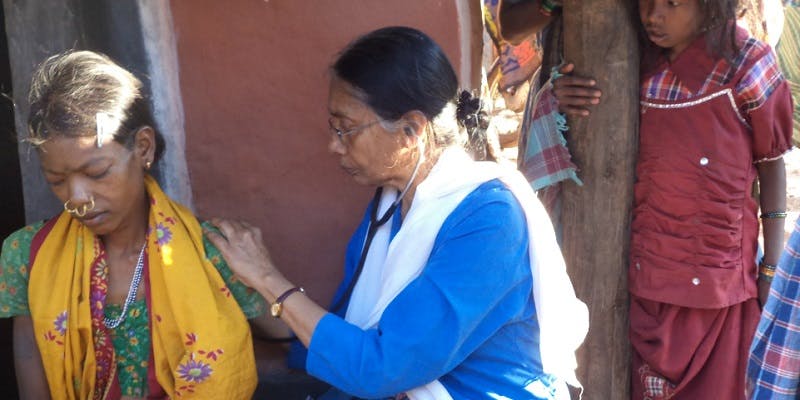
66 year old doctor takes healthcare to isolated villages, awarded
 At 66, Dr Aquinas Edassery could’ve chosen retirement or could’ve run a clinic at home. But she wanted to come out of the comfortable life and serve the needed. From 2013, she chose to work for the tribal people living in the forests of Thuamul Rampur Block in the district of Kalahandi, one of the extremely backward regions in Odisha. For her humane work, she will be awarded the Forum for Medical Ethics Society — Indian Journal of Medical Ethics Award, at the World Congress on Bioethics for ethical practice, and improved access to healthcare. She is the first doctor to receive this award.
At 66, Dr Aquinas Edassery could’ve chosen retirement or could’ve run a clinic at home. But she wanted to come out of the comfortable life and serve the needed. From 2013, she chose to work for the tribal people living in the forests of Thuamul Rampur Block in the district of Kalahandi, one of the extremely backward regions in Odisha. For her humane work, she will be awarded the Forum for Medical Ethics Society — Indian Journal of Medical Ethics Award, at the World Congress on Bioethics for ethical practice, and improved access to healthcare. She is the first doctor to receive this award.
“It was not an easy decision to make, to move to a remote corner of the country that lacks basic facilities, to gain the trust of the tribal people and work with them, and not knowing the local language. People who get job transfers here consider it to be a punishment transfer,” she says. In Kalahandi’s Thuamul Rampur block, the primary health centre has just one doctor and one nurse. Most of the women have unassisted deliveries at their homes. The place has rampant malaria cases — people do not know how it spreads or that it can be cured. Tuberculosis is rampant too. Deaths are eerily silent. “Someone had to step in and start doing things,” says Dr Aquinas. She now runs 24/7 health centres at two locations in Thuamul Rampur block of Kalahandi, which are severely deprived of health facilities.
The health centre at Kaniguma village has a team of five doctors, three nurses and lab technicians from different parts of the country who caters people from more than 150 villages.
The health centre at Kerpai village is in a remote place. The 38 villages of Kerpai and its neighbouring gram panchayats are practically in an area which has not seen medical care before. The team travels to the villages in jeeps. Some places are so remote that the jeep has to be parked at a place from where the team has to walk five to six kilometres to reach the villagers. “We started working in Kalahandi in 2013 and started the centres in 2014. It was known to the world in the 80s and 90s for starvation deaths and frequent droughts. Now the district is doing quite well, but for the tribal dominant blocks. Thuamul Rampur block has more than 82 per cent tribals. The only healthcare available to them is from tribal gurus or healers,” said Dr Edassery.
After graduating from St John’s Hospital in MD Medicine, she taught there for a brief period. After that, she worked in Chamarajanagar for seven to eight years. She realised that this is where her services were required. “We require Rs 1.3 crore to keep the centres operational and have funding from Tata Trust at the moment. But we would welcome donors. The award of `1 lakh will be used for the health centres,” she said.
She also trains Swasthya Sathis, who are village women selected by villagers at village meetings, one per village or hamlet. Along with that, a team of 20 young men have been chosen as healthcare communicators to educate fellow villagers on how to stay healthy and control malaria, tuberculosis and leprosy.
“Apart from non-availability of basic medical facilities, if you look at the larger picture, literacy rate here is an abysmal 9%, people are ignorant, and girls get married and become mothers in their teens. You need to see the problem from a wider perspective. That’s why we spend 50% of our time in providing medical facilities and 50% in creating awareness,” says Dr Edassery.
Source: The better India, The New Indian Express